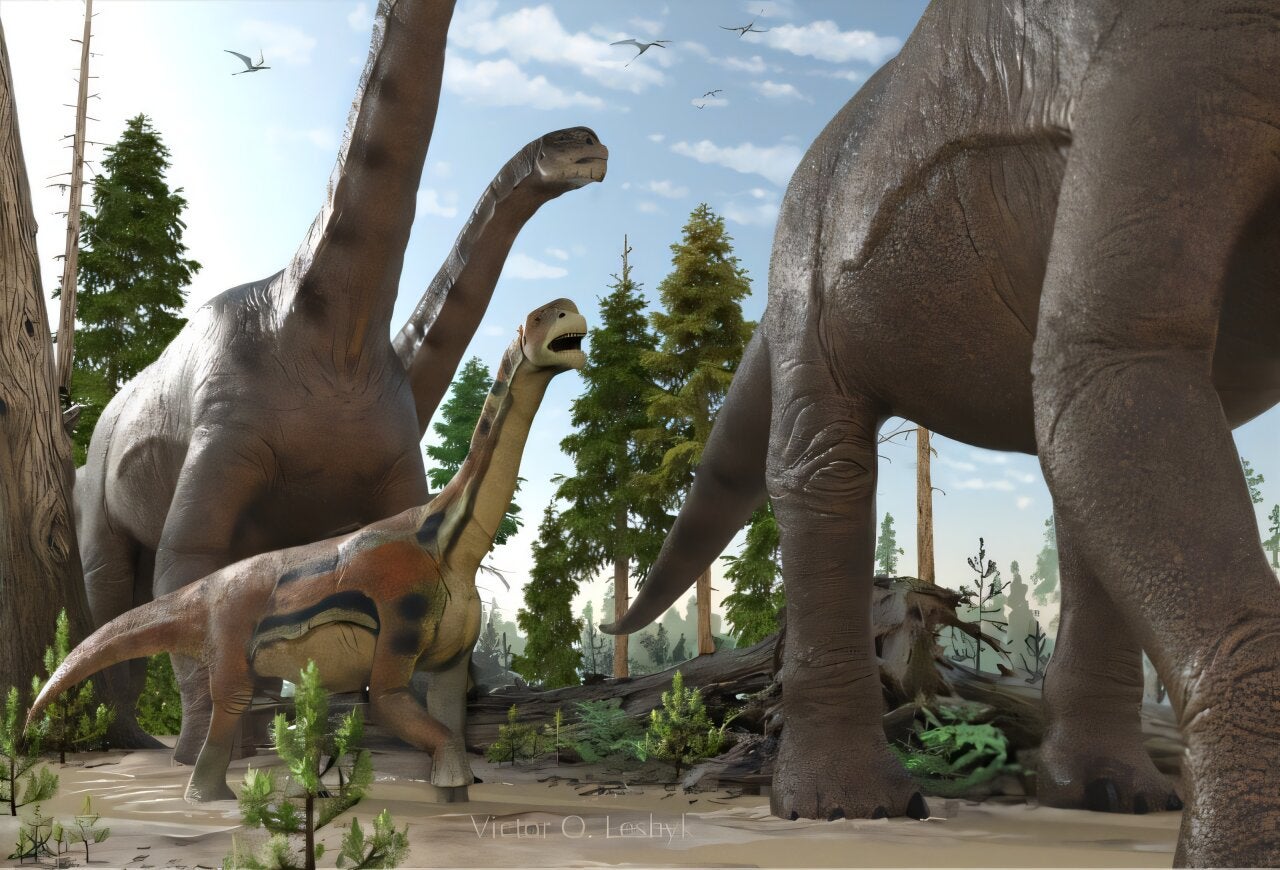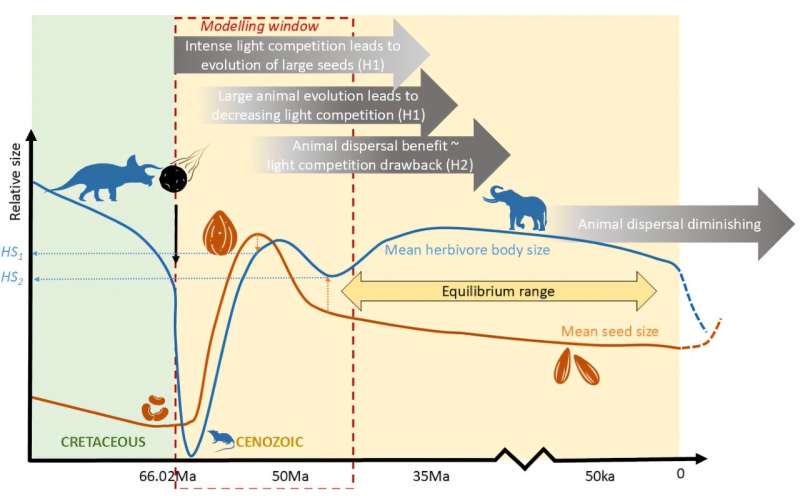The extinction of dinosaurs about 65 million years ago helped create an environment where fruits could thrive, leading to the evolution of primates, a new study has found.
The new study, published in the journal Palaeontology, has found evidence for a long-considered theory about the critical role of dinosaur extinction in the evolution of fruits.
For instance, a group of giant long-necked dinosaurs called sauropods vastly changed their environments by knocking down trees and eating high volumes of vegetation.
During the dinosaur era, the average seed size of plants was small, and fruits were rare.

The influence of such large dinosaurs was so vast on the environment that after their extinction, forests grew back thicker, blocking the sun from reaching the ground layer.
Many generations later, scientists theorised this could have led to the “exponential growth” of large seeds and fruit.
This is because in denser forests, the competition for light incentivised trees to grow taller and faster than their neighbours, and trees grown from larger seeds had a head start in that competition.
Large seeds and fruits eventually became the main food source for many animals, including our primate ancestors.
However, this theory hasn’t been demonstrated through fossil records.
“At first glance, the darker forest understory caused by dinosaur extinctions may seem unimportant, but it could have directly led to the evolution of our fruit-eating primate ancestors,” study co-author Christopher Doughty said.
In the new study, scientists created a simulation where seed and fruit size increased as a response to the darker forest understory that followed dinosaur extinctions, matching actual seed size trends in the past 65 million years.
The model incorporated recent knowledge of how large animals affect forest structure, how seeds grow into seedlings and saplings, and how animal size has changed over time.
Scientists found that their model closely replicated the observed trends in seed and animal size over time.
When they continued running the model, they encountered a “mysterious phenomenon” in the fossil record.

To their “surprise”, researchers found that about 35 million years ago, seeds reversed course and started getting smaller.
This, researchers explained, was because land animals of the time once again become sufficiently large to have a similar effect on the forests as the dinosaurs did.
“Our model predicted these animals would open the forest enough that sufficient light began to enter the understory, and larger seeds were no longer successful over smaller seeds,” Dr Doughty explained.
“The evolutionary pressure for seed size to increase began to diminish. Thus, we were able to explain the trends in seed size over time without resorting to external influences,” he said.




